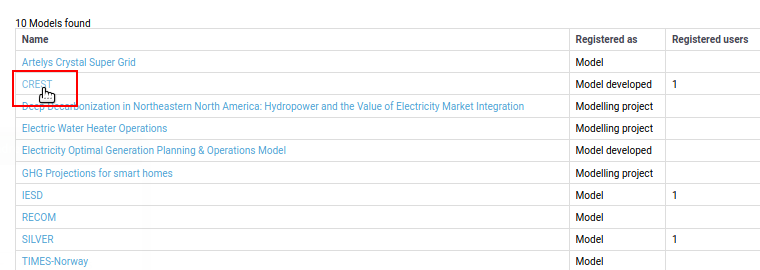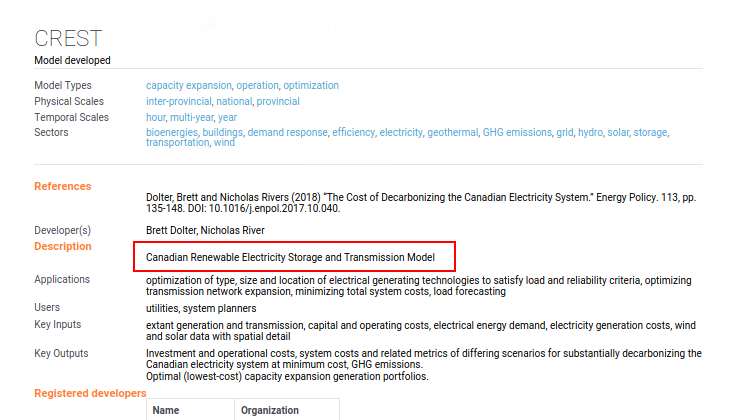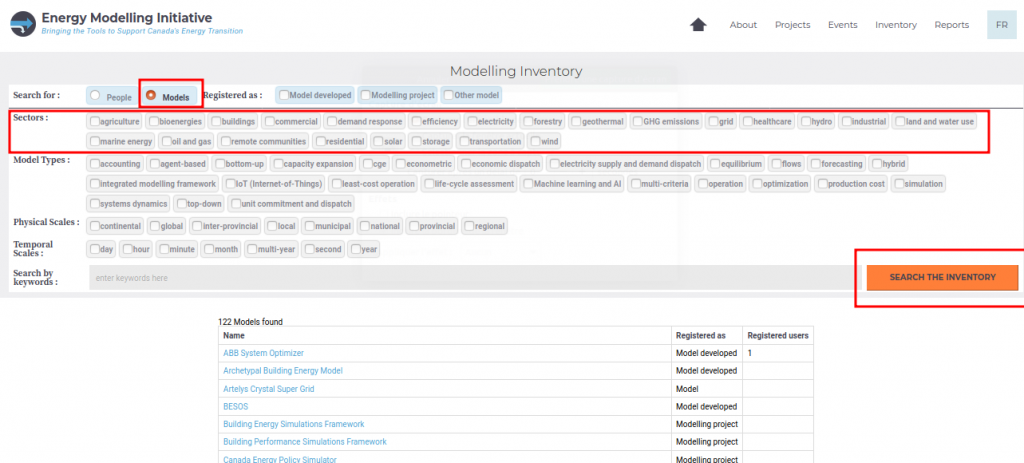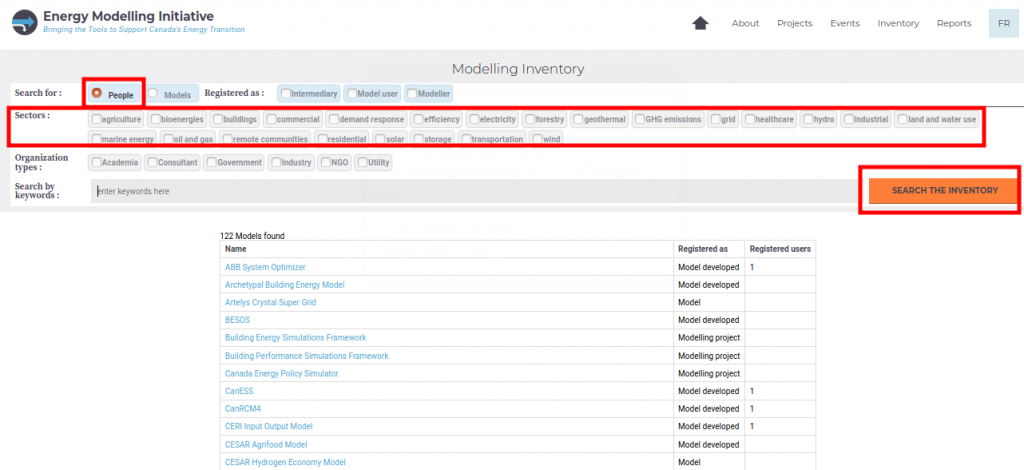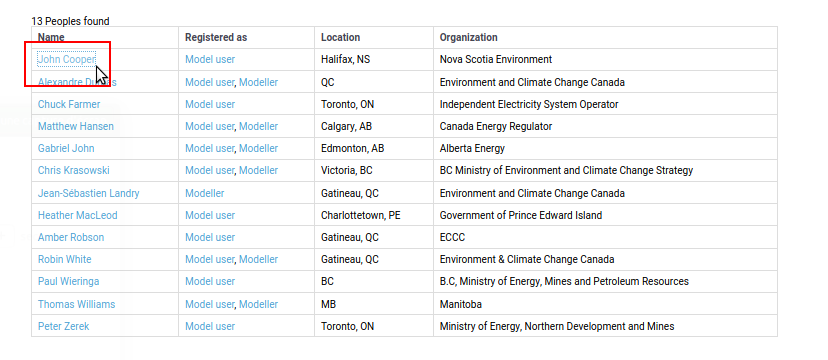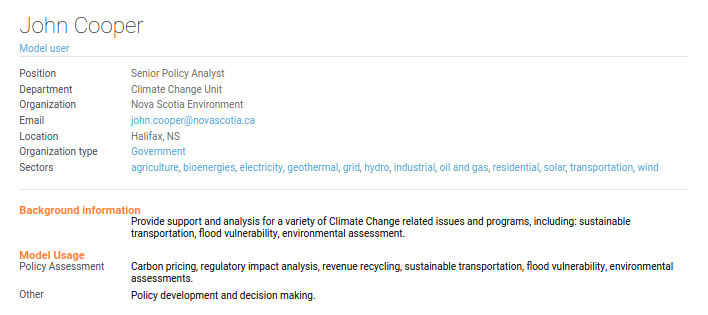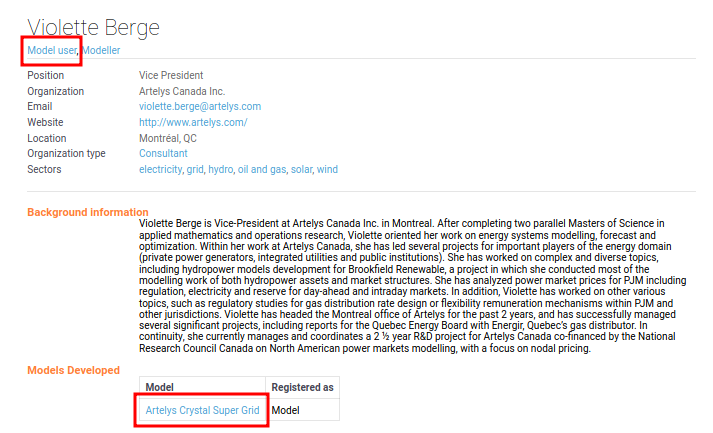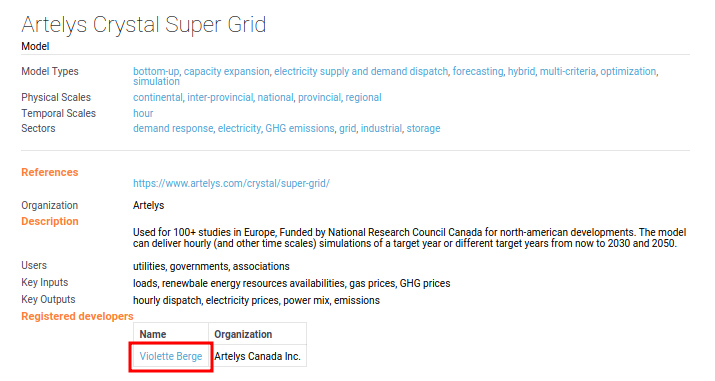Introduction
The EMI modelling inventory is based on a survey that has been administered between November 2019 to March 2020, inquiring about energy models developed and used in Canada. It was designed to capture the diversity of the Canadian Energy Modelling Community and provide a first virtual platform for facilitating communication between its members and all those who have an interest in Canadian energy modelling capabilities. It profiles 161 members who had provided valid entries and 123 different models — including 68 models that have been developed by registered members. What follows is a quick user guide for using this platform effectively.
1. Default view
The landing page of the inventory consists of a search interface on top, followed by an overview of all 123 models including their names, type of registration and number of registered users.
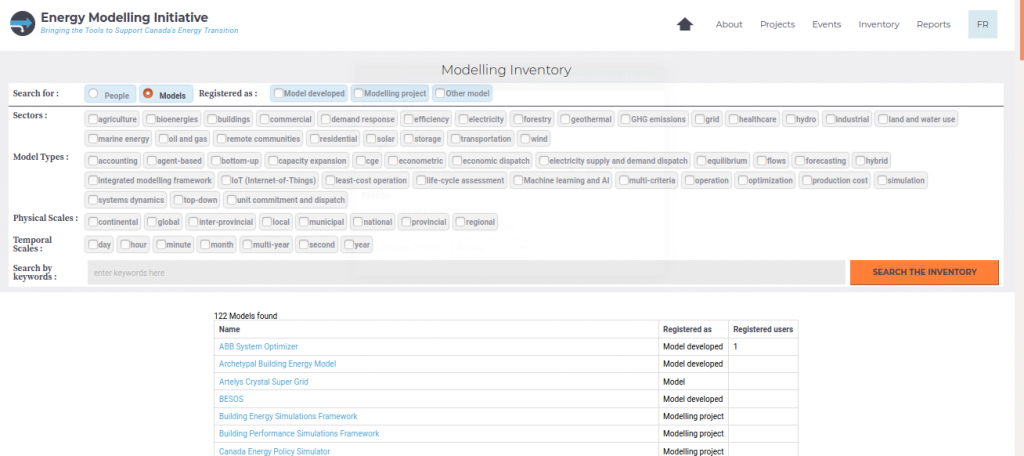
Names are based on user inputs. If models are known by their abbreviation, they are displayed as such and the full name will be available in the model profile, accessible by clicking the name.
Once you make any choices beyond the default view, you have to hit “Search the inventory” button to be shown the updated results.
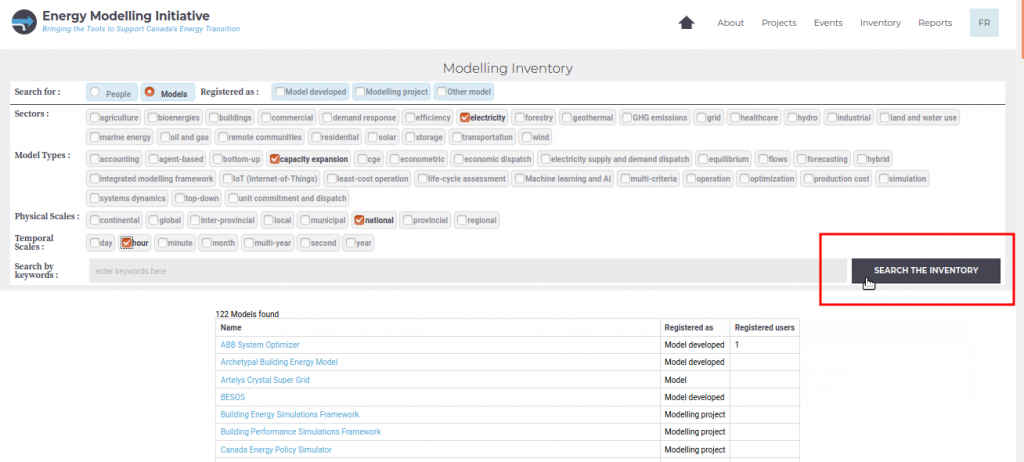
2. Broad Search Parameters
There are several ways in which you can perform a broad search by making choices in the “search for” section on top of the inventory page:
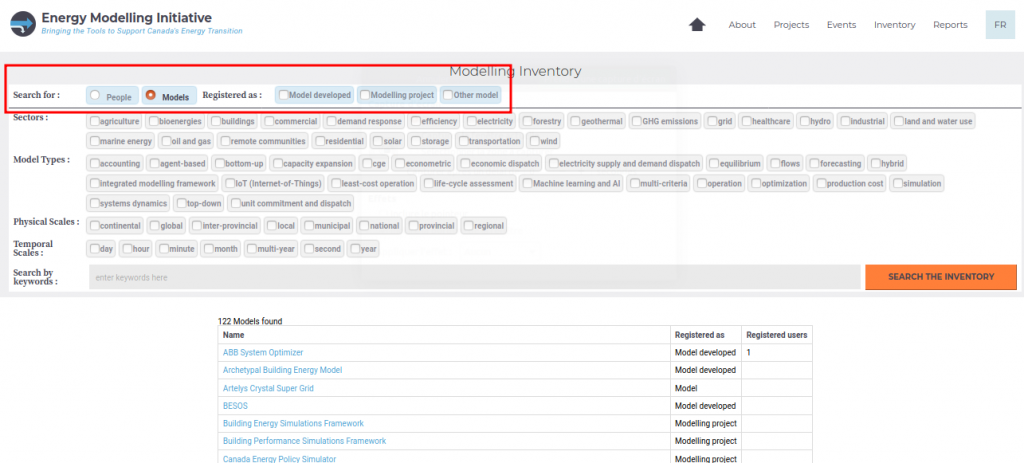
2.1 People vs. Models:
You can choose in which section your search will be performed. By default, the landing page shows you all models but if you click on people, the list of all 153 people in the inventory will be shown.
2.1.1 Models
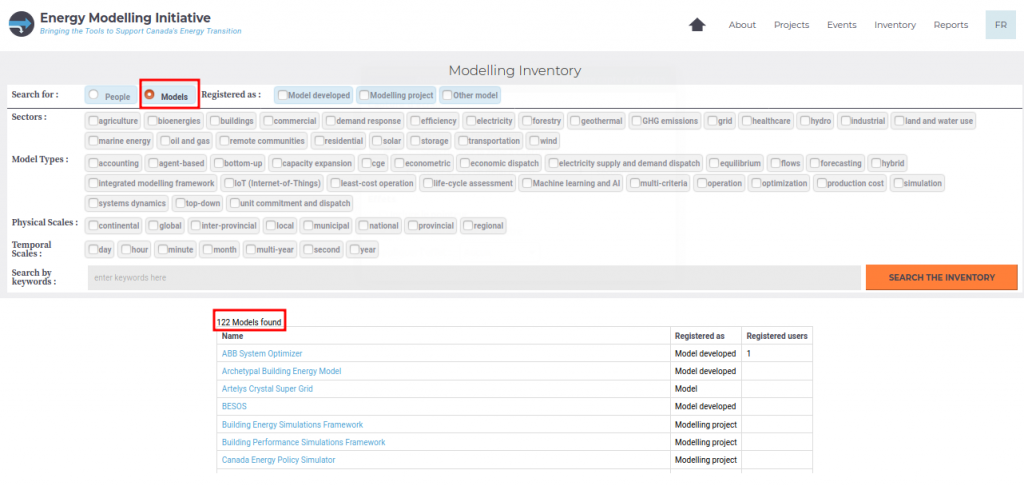
- Models Developed: include a personal reference to a developer.
- Modelling projects: research studies utilizing and/or establishing energy models
- Other models: based on use-case references provided by model users in survey.
2.1.2 People
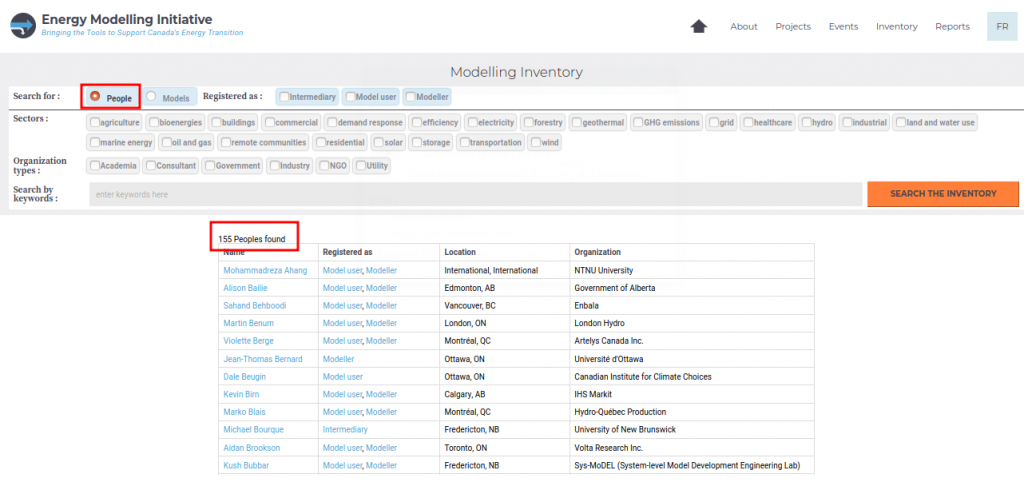
- Modellers, Model Users and Intermediaries: you can choose to narrow down your search by whether participants identified as model developers, model users and intermediaries. If you choose multiple items, all entries associated with either will be shown in results.
- Intermediaries: These are the ones that identified in the survey as “other” and work indirectly with model outputs in the energy sector and are interested in modelling.
3. Detailed search parameters:
You can make a broad selection of parameters to narrow your search down to a more detailed search of people or models.
3.1. Sectors
A broad range of sub-sectors of energy in which modelling finds use and modellers, users and other intermediaries associate with (can be selected for both people and models).
3.2 Organization Types (People)
Here you will find type of the associated organization, as identified by survey participants.
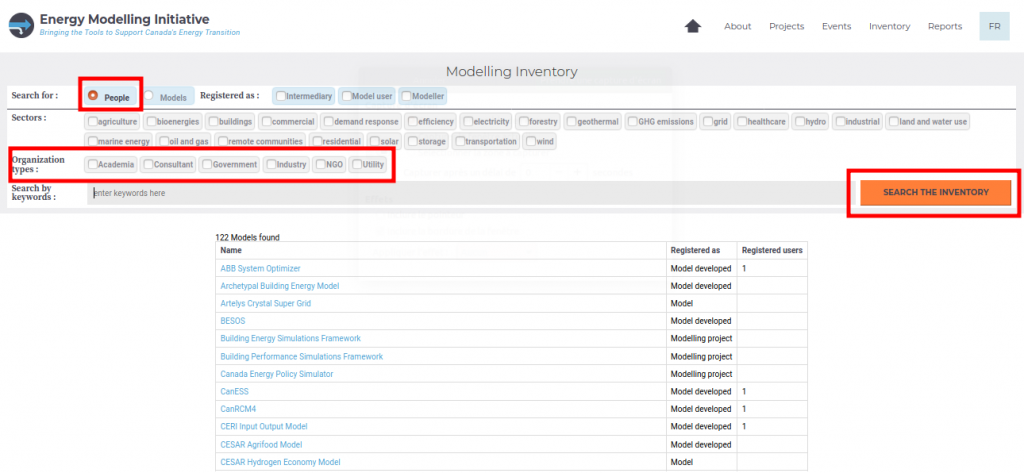
3.3 Model Types (Models)
The type of model as identified by the developer or associated contacts in the survey. The survey question has been open (textbox) but it included a comment section giving some examples and a list of references from scientific literature. The current list is based on valid and re-occurring entries.
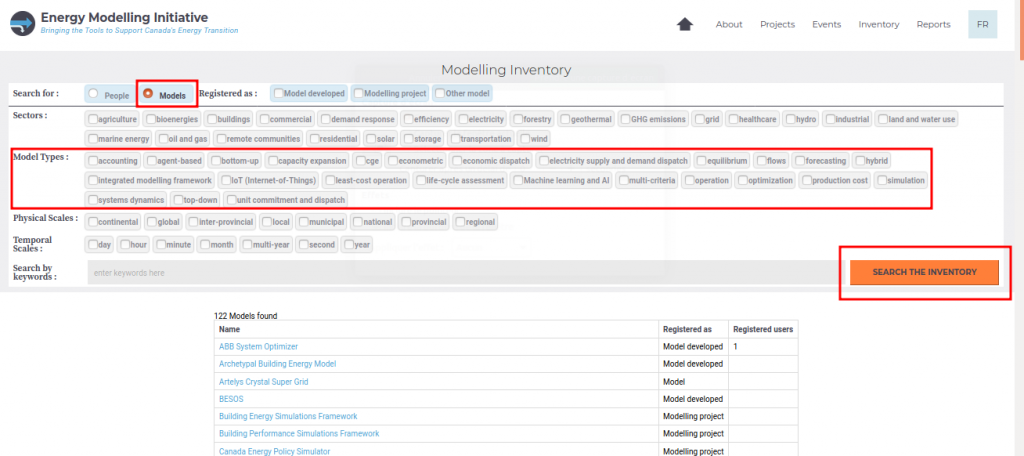
3.4 Physical Scales (Models)
Physical scales indicate the geographical dimensions at which the model can be applied. Some have provided the scale at which the model has been applied whereas some have provided the entire spectrum at which the model could be applied.
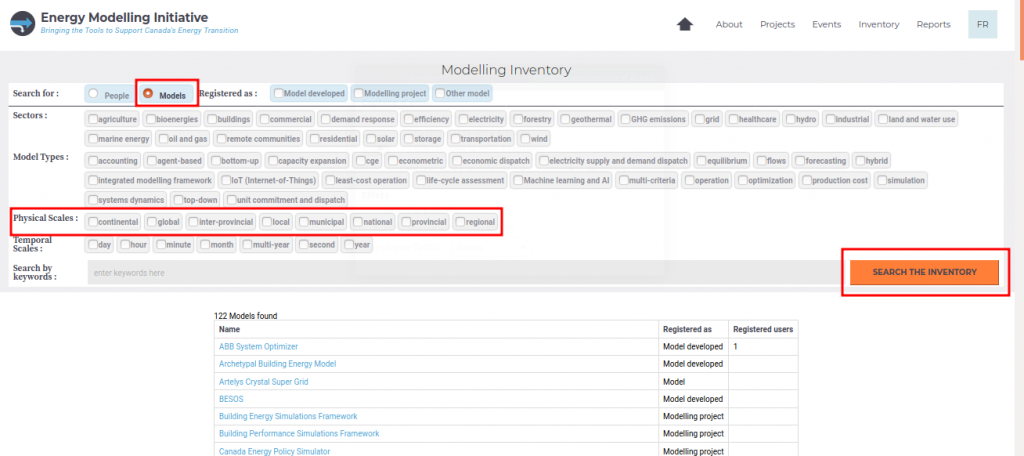
3.5 Temporal Scales (Models)
Temporal scales indicates the temporal granularity of the model; in other words, it indicates the time spans in which the model processes data and generates results.
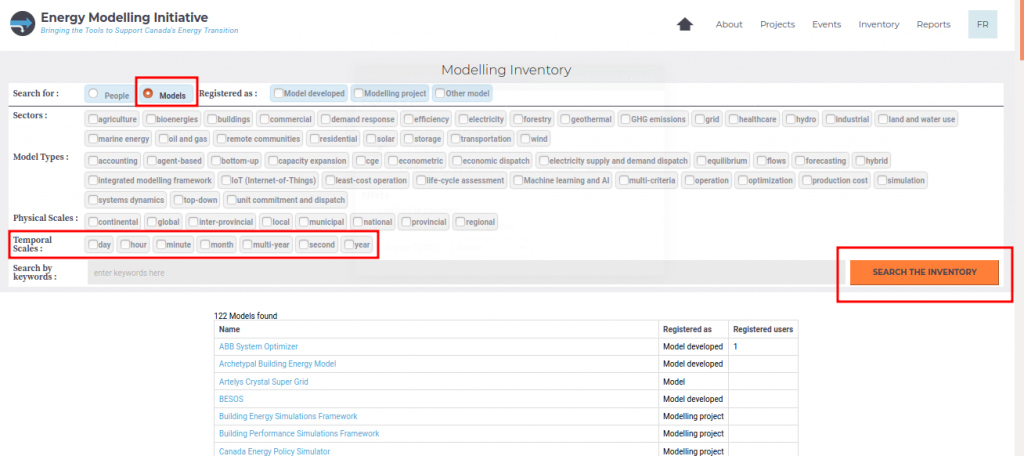
4. Search by Keyword
Even though you could narrow down your search substantially by specifying detailed parameters and choosing tags, you can also perform a keyword search to find customized matches. You can perform a simple keyword-only search or combine a selection of tags with your keywords before searching.
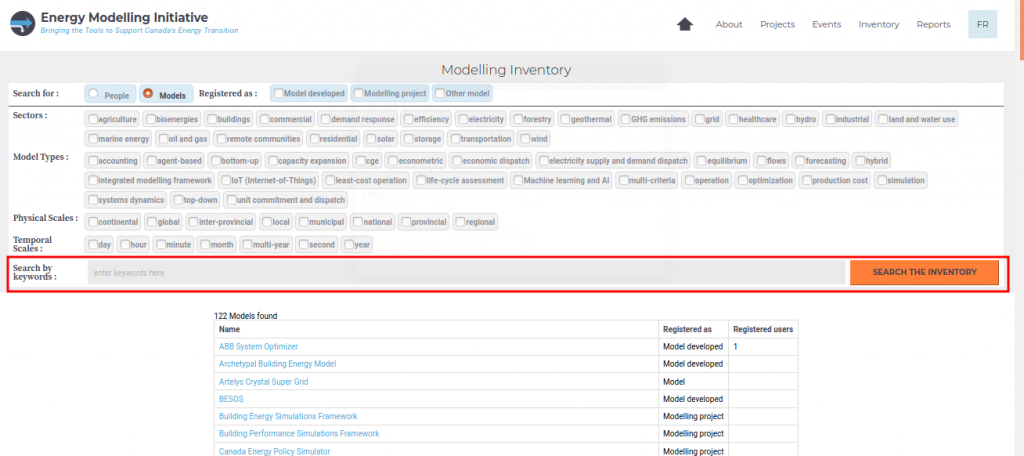
Keyword search is performed in all text fields but not in the fields for which you can choose tagged parameters. Depending on your choice to search for people or models, the keyword search will be performed in the corresponding section of the inventory data.
5. Display of results
The results are always shown in columns below the search bar. On top of the columns, the number of results found is displayed.
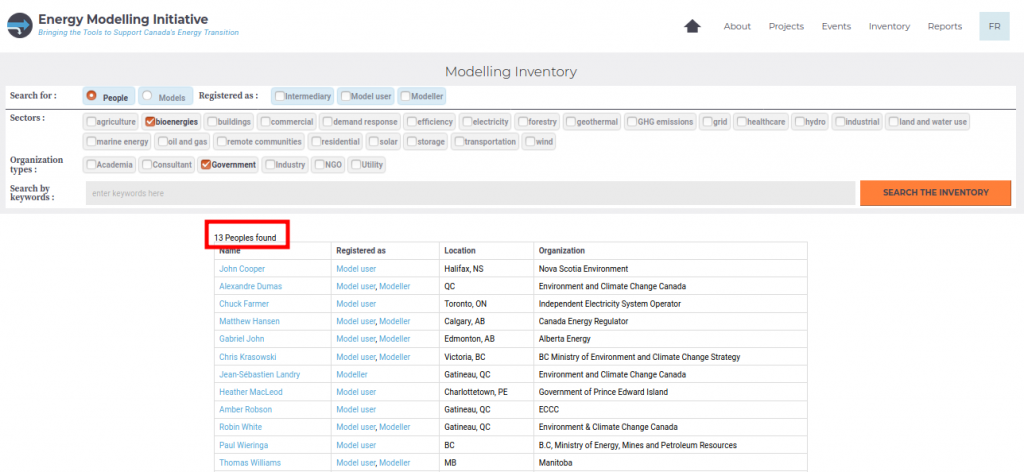
5.1. People
Results are shown in four columns including name, registration type, location and organizational association. Upon clicking each name, the full profile including all information will be navigated.
Profiles include a broad range of personal information such as associations, contact, reference, location, sectors and bio.
Tags (for sectors, organization type and registration type) are marked with a blue font will navigate to a new search of all people with that tag (for more information see “Detailed research parameters” section above).
The subsection titled “Model Usage” reflects the response of some participants to a question about the purpose for which modelling has been used in their organization; “Policy assessment” reflects specific applications in the policy making realm.
At the bottom, a list of models associated with the person is provided. Clicking the models will navigate to the profile of that model.
5.2. Models
Results are shown in three columns: model name, type of registration and number of registered users. The type of registration indicates whether the model:
- includes a personal reference to a developer (model developed),
- is a research project utilizing and/or establishing energy models (modelling project), or
- is profiled based on a use-case references provided by model users in the survey (other).
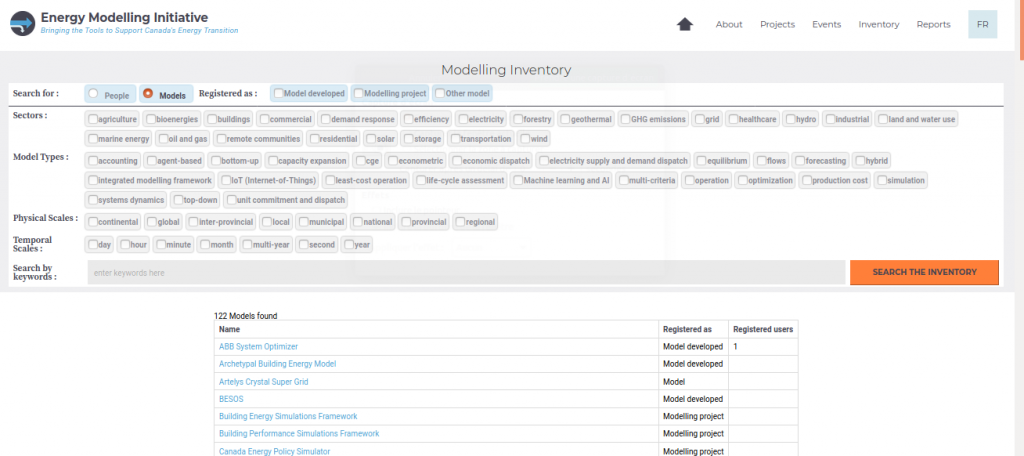
Model profiles include a broad range of information delivered in three section:
- Tags for model types, sectors, and physical and temporal scales sectors (for more information see “Detailed research parameters” section above).
- Additional technical information including descriptions, document references, associated organizations, applications, users, key inputs and key outputs.
- At the bottom, two tables offer links to the profiles of developers and users of the model which are registered within the inventory.
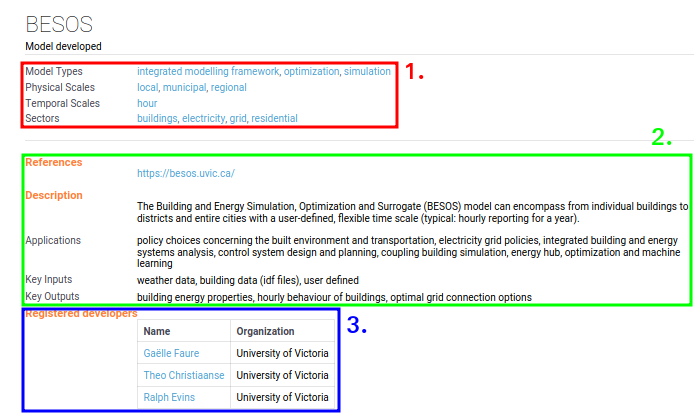
6. Terminology
6.1 Search Bar
Search for: determine if it is a search for models or people in the inventory. Registered as (People): determine which type of participants you’re looking for:
- Modellers: those who develop models;
- Model users: those that use models and their outputs directly;
- Intermediaries: those that identified in the survey as “other”, are interested in modelling and work indirectly with model outputs in the energy sector.
Registered as (Models): determine which type of models you’re looking for:
- Models Developed: include a personal reference to a developer;
- Modelling projects: research studies utilizing and/or establishing energy models;
- Other models: based on use-case references provided by model users in survey.
Sectors (People and Models): different sub-sectors of the energy sector with which survey participants and their models are associated. Organization types (People): types of the organization that survey participants associated with. Model types (Models): as identified by the developer or associated contacts in the survey. The survey question has been open (textbox) but some examples based on a list of reference literature were provided. The current list is based on valid and re-occurring entries. For more information please visit the page Literature. Physical scale (Models): the geographical dimensions at which the model can be applied. Some have provided the scale at which the model has been applied whereas some have provided the entire spectrum at which the model could be applied. Temporal scale (Models): the temporal granularity of the model; in other words, it indicates the time spans in which the model processes data and generates results. Availability (Models): informs about the accessibility of the model. By default, any model whose equations are presented in a scientific article is considered available on request.
6.2 Results: People
Background information: a short bio that reflects the expertise of people in the inventory, as relevant for energy modelling. Model Usage (policy assessment): reflects the response of some participant to a question about the specific usage of models for various policy making efforts. Model Usage (other): reflects the response of some participants to a question about the purpose for which modelling has been generally used in their organization. Models developed: lists all models developed by the respective person as profiled. Models used: lists all models used by the respective person as profiled.
6.3 Results: Models
References: the main reference for each model. Organization: the principal organization in/for which the model has been used/developed. Developers: the principal developers of the model, as identified by participants. Descriptions: additional information including additional references, abstract of modelling projects and occasionally physical and temporal range of the model. Applications: actual and potential areas of the model’s application as identified by survey participants. Users: actual and potential users of the model as identified by survey participants. Key inputs: data and assumptions that go into the model as identified by survey participants — mostly, user-defined key inputs. Key outputs: key results of the model that are key to the model’s application, as identified by participants including model developers and model users. Registered developers: the primary contact(s) for model development who have a profile in the “People” section of the inventory. Registered model users: the primary contact(s) who use the model and also have a profile in the “People” section of the inventory.

